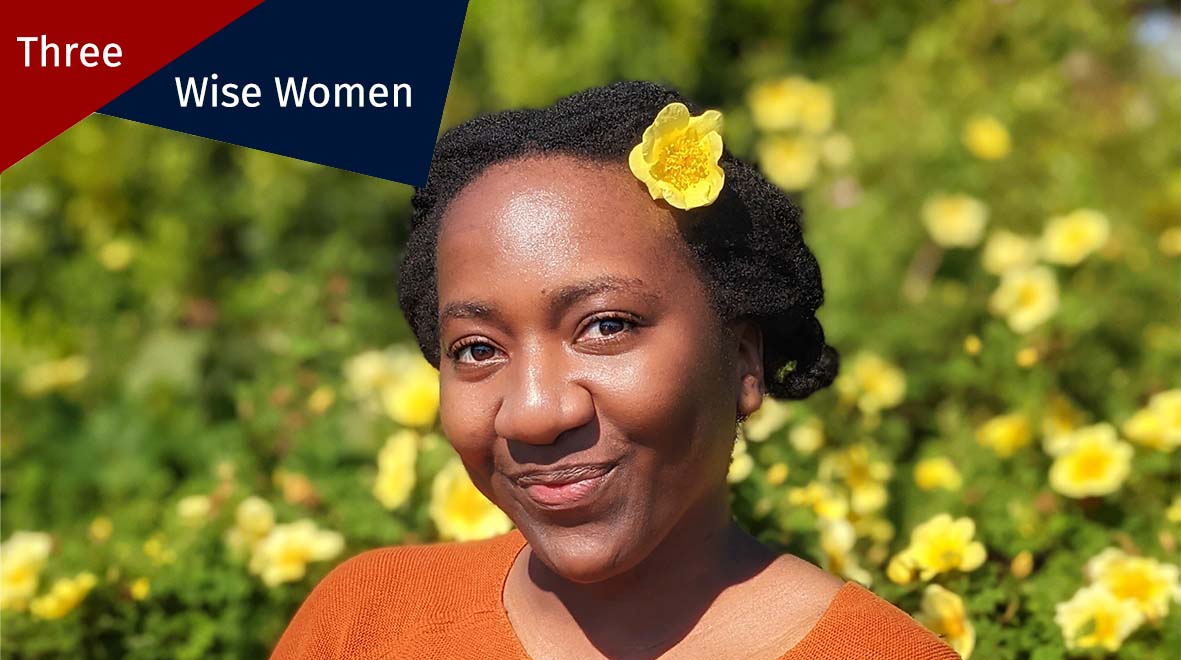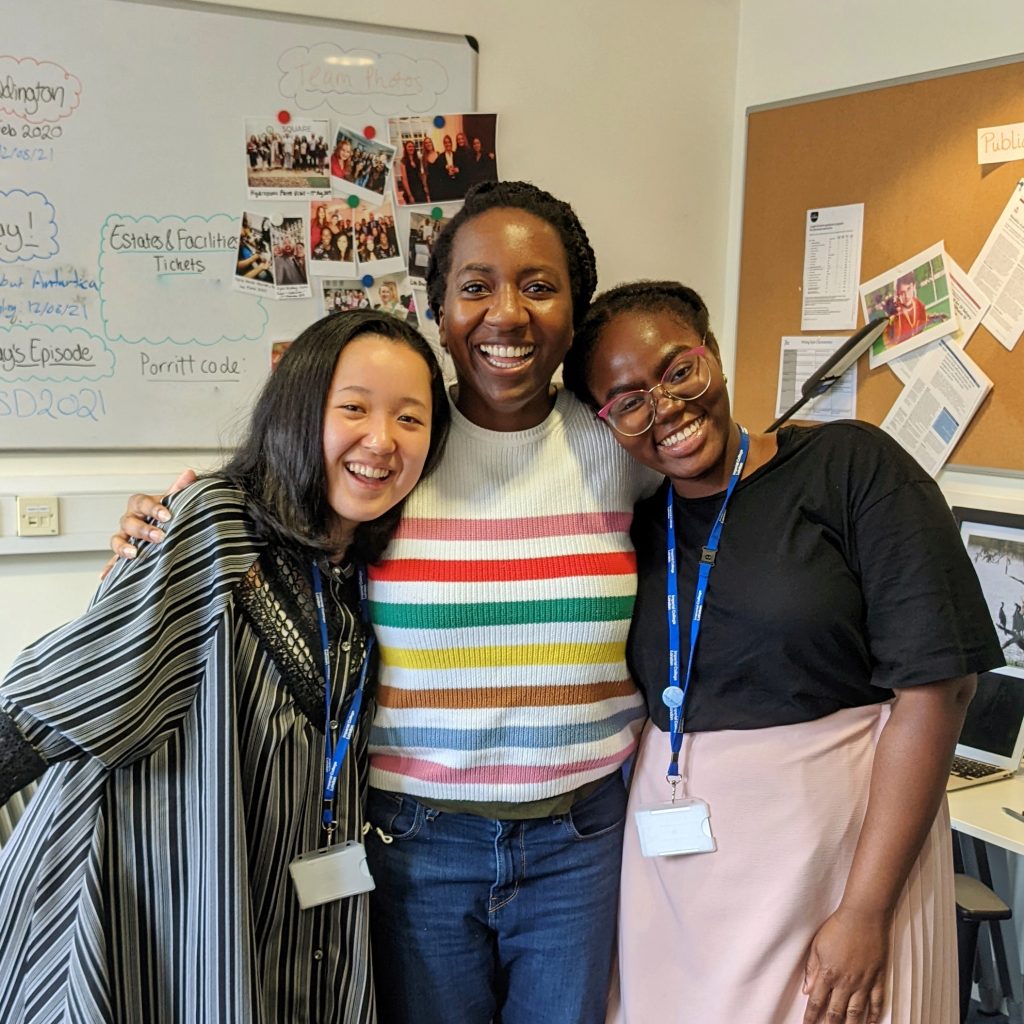
This festive period Three Wise Women from the Faculty of Medicine will be giving us the gift of wisdom.
Clarissa Gardner, founder of the Julia Anderson Training Programme, shares insight into setting up the scheme and provides practical guidance for others on how to use the model within their own organisations.
2020 was a strange year. We lived through a pandemic that took a huge toll on our economy, our mental wellbeing, and for some of us the lives of our loved ones. 2020 was also the year in which there was renewed interest in addressing social injustices that have impacted traditionally underserved communities across the world.
At Imperial College London, like many other academic institutions, there were many discussions being held about our history, curriculum, use of language to describe people, and the representation of students and staff of different backgrounds at various levels.
However, I was getting tired of these many discussions and seeing few actions. As a staff member and postgraduate student, I found myself questioning what I could do to have an impact in this space. In my 3 ½ years at the College, I was one of two Black research staff member in my institute, and I was the only Black student on my MSc course. I wanted to see tangible outputs that could do something about the lack of representation of people like me in academia.
This was the catalyst behind me proposing and developing the Julia Anderson Training Programme at the Institute of Global Health Innovation (IGHI). The purpose of the programme is to create paid meaningful work experience opportunities for people who have no or limited experience. Twice a year, teams at IGHI are invited to put together a proposal to host a trainee for an 8 – 12 week placement in which they learn new skills and actively contribute to important projects.

A case study for other organisations
Reflecting on the College’s Equality, Diversity and Inclusion (EDI) strategy, I set out to design a recruitment, selection and onboarding process that would encourage applications from people who are from underrepresented backgrounds in academia. This includes people from Black, Asian and ethnic minority backgrounds, those who identify as LGBTQ+, and those who live with a disability.
Since the launch of the programme in 2021, we have had over 400 applications across three cohorts, and we have hosted six incredible trainees. They truly reflect the success of the programme through their personal and professional growth, with many having gone on to secure their first full-time role.
However, in sharing the success of the programme I come across the same questions from other organisations I speak to: “What do you think we could do?” or even “Would you like to set up a similar thing here?” While the intention behind these questions is well-meaning, it’s great to meet people who want to do something about the lack of diversity in their organisation, my ambition in life isn’t to go around setting up training programmes. Instead, I like to think of the Julia Anderson Training Programme as a case study from which people can decide for themselves what systemic changes would support their organisations EDI goals.
This programme represents one approach to addressing this issue, it’s by no means perfect but I feel we have learned things that other organisations could try out to see if they find a measurable difference.
At the recruitment stage:
- What would be appropriate essential criteria?
Consider the level and salary of the role you are advertising and think carefully about what the essential criteria for a candidate should be. JATP trainees are paid Professional Services Level 1A and we wanted to attract people with limited or no work experience. As such, we supported teams to make sure the essential criteria focussed more on soft skills with the understanding that they will develop technical skills as part of the traineeship.
- Do you need a CV?
Writing a CV is stressful enough when you have too much experience to cram into two sides of A4. Add to that the irritation of having to upload a CV for a job application only to then have to copy and paste the same information into another form. For JATP applicants, we anticipated they’d have the opposite challenge. By creating a bespoke application form we were able to direct specific questions to applicants about the existing knowledge, skills and experience they had that was relevant to the post they were applying for. That was it! One application form.
- Give people a heads up
Have you ever been surprised by the length of a job application or the types of questions you’re being asked? Or are you prone to making spelling or grammar errors on your applications? To support applicants, we made a Word version of the application form available on our website. We encouraged applicants to prepare their answers in the form before completing the online application. We also held a webinar for applicants and those who got invited to interview, providing them with tips and insight into what to expect.
- Tap into other networks
Depending on who you are trying to reach, you may want to consider where you are advertising your roles. We reached out to scholarship networks that specifically reach people from underrepresented backgrounds in academia. We also used social media to spread the word about the programme, and posted the job on university careers websites.
At the selection:
- Keep an eye out for potential
As we were looking for those with limited work experience, we focused more on identifying candidates who demonstrate they had read the job description and expressed a clear interest in the training opportunity. As such, we wrote it into our essential criteria that we were looking for people who had an interest in developing specific technical skills so we could give scores to those applicants in the shortlisting process. We also opened up the interviews by inviting candidates to speak briefly about their proudest achievement. This was a nice ice breaker to give interviewees a chance to relax before the question-answer portion, as well as an opportunity to get to know them a bit better.
- Redirect the overqualified
We often had enquires from doctors, dentists, and PhD candidates who wanted to apply for the programme. This happened for many reasons (people who had qualified abroad and wanted to restart their career in the UK, people who wanted to change career path, people who wanted to have “Imperial College London” on their CV). However, we had to explain to them that with the experience they had they could easily apply for a more senior role. In reviewing applications, we also wanted to make sure that we screened out those who were overqualified, therefore we made it part of the essential criteria that candidates had to meet the eligibility criteria for the training programme.
- Feedback for everyone
Providing feedback to candidates has been a contentious and highly debated issue, considering the amount of time that candidates dedicate to the application and/or interview process but also the sheer number of applicants a post can receive. However, we felt that it was appropaite that everyone who applies to the JATP receives feedback if they request it. The feedback could be relatively high-level in the first instance which will satisfy many, but for those eager to learn more and improve their practice we would set up a call to provide more in-depth feedback.
During onboarding:
- Preparation
Although we already had pre-prepared projects for the trainees to get stuck into, we wanted to take a personalised approach to supporting them throughout their traineeship. Hiring managers were encouraged to book a call with trainees before they start to identify any additional personal and professional development opportunities they would like to pursue during their traineeship.
- Mentorship
A core offering of the training programme is that each trainee gets paired with a mentor from the institute who they meet with at least three times throughout their traineeship. Mentors are trained by Imperial and provide support on identifying future career interests, feedback on CVs, and networking.
- Relationships
I think one of the most amazing outcomes of the training programme is the relationships that we built with each of the trainees. I don’t think we anticipated how much light they would bring to our department, especially considering this programme was born out of an immense period of social isolation. But it raises an important reflection on how supporting early career professionals entering the world of work after the pandemic also includes helping them build connections with their colleagues. We had debated making the traineeship remote, but ultimately we decided to require three days in the office to ensure they got the holistic support and networking opportunities that we had pre-pandemic.
2020 was a strange year, and while the days and months may have been a blur, the impact that year has had will stay with us. In that sense, my hope for the years to come is that we see more radical change to improve access to employment for everyone.
Clarissa Gardner is Honorary Research Fellow at the Institute of Global Health Innovation and is a User Researcher for the National Institute for Health and Care Excellence (NICE).